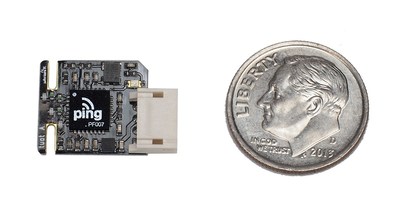
A recent study published in January 2017 by The MITRE Corporation's Center for Advanced Aviation System Development (CAASD) imagined a future world of very high traffic densities of drones operating with ADS-B onboard, and then sought to understand the implications of that. The study suggests that there is a nominal transmission power output between 0.01 and 0.1 Watts that when coupled with limited drone traffic densities can result in a compatible operation with the system as a whole.
"We developed this product to show the world the art of the possible," said Paul Beard, CEO of uAvionix. "We can't yet sell this device because the standards that were developed for ADS-B did not take into account the value of air-to-air ADS-B communications between small drones or between small drones and manned aircraft. It's literally not legal to transmit at these low power outputs. We aim to lead the discussion and development of those standards, and will work with any regulatory body to do so."
The MITRE report can be found here: http://www.mitre.org
About uAvionix Corporation
uAvionix develops the world's smallest, lightest and most affordable ADS-B transceivers and transponders, Ping. uAvionix's Ping network system combines hardware, software, and real-time airspace mapping to enable companies to safely and reliably operate drones in the NAS. Based in Palo Alto, uAvionix has gathered a cross-disciplinary team of experts in embedded RF engineering, sUAS operations and compliance, hardware, software, and cloud services.
For more information, visit our website:
www.uavionix.com
Follow us on Twitter:
www.twitter.com/uAvionix
Contact: Ryan Reed
Communications
Email Contact
406.249.1395
To view the original version on PR Newswire, visit: http://www.prnewswire.com/news-releases/uavionix-demonstrates-dime-sized-ads-b-for-high-traffic-density-drone-operations-300398518.html
SOURCE uAvionix Corporation
| Contact: |
| uAvionix Corporation
Web: http://www.uavionix.com |








